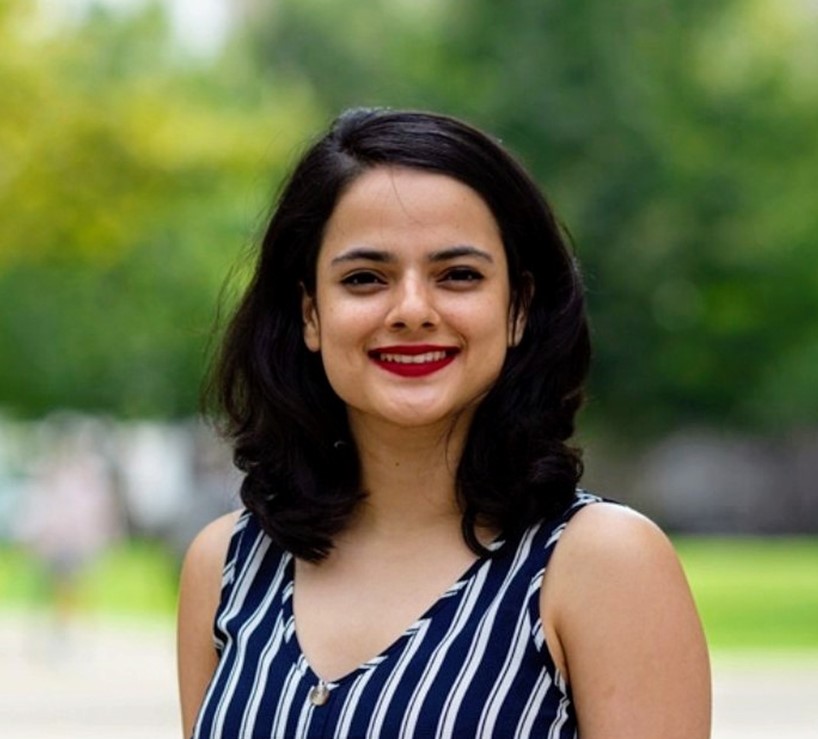Today, the conversation on responding to the climate crisis focuses disproportionately on mitigating greenhouse gas emissions like carbon dioxide. This view—held by some wealthier countries, multilaterals, and donors alike—tends to prioritise interventions and technologies based on their ability to avert carbon emissions. While this focus is crucial, taking a holistic approach to funding the crisis in low- and middle-income countries that are fraught with development challenges often gets sidelined.
For example, CARE India, a nonprofit working on issues of gender equality, reported that while there has been a big emphasis on mobilising ‘new and additional’ climate finance in the form of USD 100 billion a year, wealthy countries have repeatedly missed this target. They have also failed to ensure that climate finance is ‘new and additional’ to their support for development. Most of this public climate finance committed by wealthy countries is taken directly from development aid budgets at the cost of pressing challenges in health, education, women’s rights, poverty alleviation, and many others.
Another concern came up in a recent conversation with a CSO partner from our network at Rohini Nilekani Philanthropies. They posed a simple yet thought-provoking question: “Our main work, around livelihood generation with the local communities, is inherently laden with many challenges such as providing education and vocational training programmes to the youth, and ensuring they’re employable once they receive this training. The primary strength of our work lies in dealing with these issues. While we recognise the threats of climate change, we are not equipped enough to integrate climate as a lens in our work with all the other ongoing challenges. And even if we would like to, we are unsure about how to do this operationally.”
This partner’s concern was reflective of a wider challenge faced by CSOs in India. Many CSOs do not have the means, knowledge, or capacity to integrate climate as a lens on top of their existing work. However, they can be the worst hit by some of these climate shocks. This begs the following questions: How can CSOs respond to climate change in their work when they are struggling with basic livelihood and development challenges? What can we, as funders, do to help build this capacity at a systemic level? And most importantly, how can our funding support the transition from a system that works in siloes to one that integrates climate as a cross-cutting lens with coordinated action across the board?

Donors can help make the shift
In India, donors are still trying to unpack the implications of climate change on the funding landscape. They are exploring how climate finance can be mobilised effectively while also balancing funding to the work that grassroots organisations are already doing. However, adopting a carbon tunnel vision without considering various livelihood and developmental issues can prove to be problematic.
A climate-sensitive approach allows us to identify new opportunities that cater to our mitigation and adaptation goals.
As funders, we must recognise that the climate crisis is not an additional challenge to be addressed sporadically, but a series of compounding risks that exacerbate existing challenges and that can threaten human survival. Therefore, we must take stock of the current realities that CSOs face and prioritise a long-term perspective to help build a system that supports their unique needs. Investing in climate capacity-building initiatives for CSOs is key to understanding how climate impacts their work. We must also partner with CSOs to help them integrate and deal with its effects systematically.
By doing so, we can begin to move towards a climate-sensitive development approach. This ensures that interventions already in place are sustainable and resilient to climate impacts. Additionally, it allows us to identify new opportunities that cater to our mitigation and adaptation goals.
What could this approach look like? And how can funders enable the emergence of such an approach?
While this is an ambitious undertaking, here are three considerations that can help get donors started.
1. Climate risk as heightening vulnerability and undoing developmental progress
In 2021, when Cyclone Yaas raged along India’s eastern coast, it destroyed thousands of homes, inundating dozens of villages and rendering 1,50,000 people homeless. Similarly, in 2020, Cyclone Amphan wreaked havoc on the eastern coast, affecting 13 million people and causing damages worth more than USD 13 billion after making landfall.
Climate change will hit us in ways that we haven’t anticipated. It can undo decades of developmental progress, especially for the most marginalised. As climate risks heighten vulnerability, it becomes critical to assess, identify, and monitor these risks to be able to respond in time. However, this can burden CSOs, especially those working directly with individuals worst hit by crises.
As funders then, the first set of considerations to support our partners in unpacking climate risk and vulnerability can include the following prompts/questions:
- What are the most vulnerable regions in the country and how can our funding enable CSOs in those areas to identify risk hotspots and be better prepared?
- Will our funding unlock the critical gaps in research, innovation, and predictive analytics that can serve as public goods to be leveraged by CSOs so they are better equipped to handle crises?
- How can our funding help grassroots organisations understand their impact on and vulnerability to climate change, and empower them to act as agents of change?
This was the thinking that prompted us at RNP to work with CEEW and ICC to develop the Climate Risk Atlas for India. A multi-stakeholder initiative, it provides granular data by region such as insights on the occurrence of extreme weather events, urban heat stress, water stress, crop loss, vector-borne diseases, and biodiversity collapse. It is a public good that CSOs, local governments, and local communities can leverage to map such vulnerabilities.
2. Climate adaptation as future-proofing development gains
While climate finance is skewed towards mitigation, it is essential to remember that no climate solution will work if communities are wiped out and unable to adapt. For donors, climate change adaptation must be intrinsically linked to the challenges that communities encounter on the ground. For example, the nonprofit Farmers for Forests shared that while their focus is on forest protection programmes, they have started work on two new projects adjacently. These include reducing human–elephant conflict in Gadchiroli and Gondia in Maharashtra, and working with farming communities to ensure the marketability of their agroforestry produce. Both these initiatives stemmed from communities’ demand for deeper engagement. They asked, “Aren’t you here to help? Then why aren’t you helping us with our houses and fields being destroyed by elephants and getting better prices for our agricultural and forest produce?”The nonprofit’s entry point was forest management and climate change. However, the community’s demands quickly helped them understand that working for the same is intrinsically linked to the daily livelihood challenges these communities face.
Better preparedness for climate change adaptation has the potential to future-proof the developmental gains of currently running programmes.
In another example, SEEDS, a nonprofit working on disaster life-cycle management and sustainable environment, estimated that over 200 climate hotspots will put more than 300 million people at risk by 2030 through disasters and other weather extremes. They are currently building an open data platform, Akshvi, that enables communities to report the impact of climate change and disasters on their lives, thereby providing a platform to create a hyperlocal loss database. This will also help facilitate the transfer of resources directly to distressed communities through partnerships between governments, aid agencies, markets, and communities.
In both these cases, there is recognition of the fact that providing a development-first approach to addressing climate change is crucial in the Indian context. Additionally, better preparedness for climate change adaptation has the potential to future-proof the developmental gains of various programmes currently running on the ground.
Post a climate-risk assessment, a second set of considerations for donors can include the following:
- Is our funding overly focused on climate change interventions, neglecting livelihoods and other systemic factors integral to the programme?
- What are the unintended consequences of mobilising climate finance in this manner? What does striving for scale mean in the context of adaptation, which necessarily requires region-specific, customised, and hyperlocal approaches?
- How can we support more adaptation work that addresses local capacity gaps and knowledge for climate?
- How do we create better mechanisms to integrate feedback from our climate adaptation efforts with existing developmental programmes on the ground?
3. Looking at climate mitigation and adaptation as a continuum
The focus of climate finance on mitigation, as opposed to adaptation and resilience, can alienate those nonprofits that don’t directly work on mitigation.
However, it is necessary to approach adaptation and mitigation as a continuum. For example, a smallholder farmer has to adapt to the extreme weather events caused by climate change. The farmer also has to switch to cleaner sources of energy, given the deepening energy and electricity crisis and depleting water resources in India. While funding climate innovations and technologies that look at mitigating greenhouse gases then, we could do well to remember the social, political, and economic realities farmers typically operate in. Even the most effective technologies will fail otherwise.
In that sense, a few key questions that donors can consider are:
- In our investments, what is the current mix of adaptation and mitigation initiatives? Can we support initiatives that combine climate change adaptation and mitigation?
- Are there any complementary and multi-pronged interventions that we need to look at? How are we balancing the need to act urgently with some of the longer-term outcomes that need strong institutions and policies?
- What is the role of technology in aiding mitigation and adaptation in the areas of work that I support? Can it act as an enabler to achieve both climate and development goals without becoming a silver bullet? What are the local and contextual factors that are important to consider in its application?
India’s climate story is intrinsically linked to its developmental challenges. As funders, while we respond with speed and scale to address the defining crisis of our times, a one-size-fits-all approach will not work. Scaling up effective climate solutions, especially in this part of the world, must go hand in hand with progress on other development markers.
—
Know more
- Listen to this podcast that unpacks climate finance in India, and explores how corporate, individual, and private philanthropy can step up.
- Read this article to learn how philanthropy can play a critical role in the fight against climate change.
- Read this article to understand why philanthropy must include a climate lens.
Do more
- If you’re a donor interested in collaborating on a climate-sensitive development agenda, reach out to Rohini Nilekani Philanthropies.





